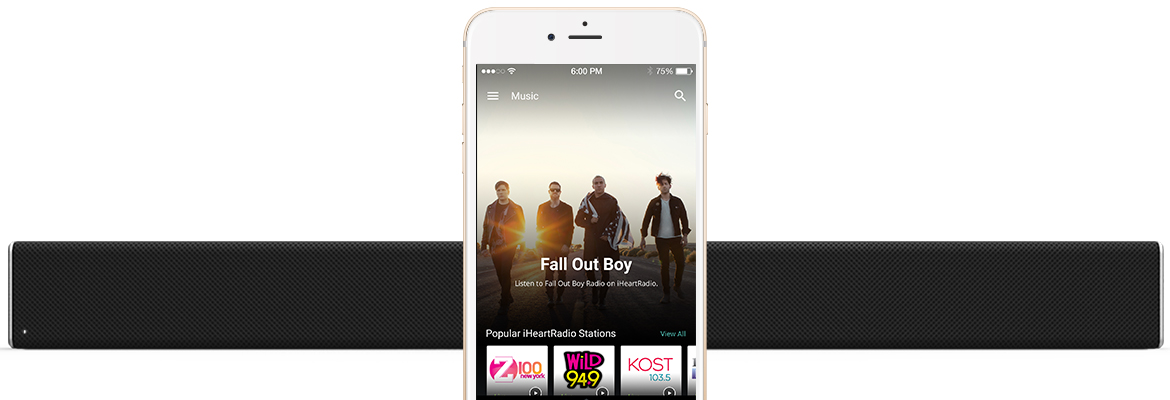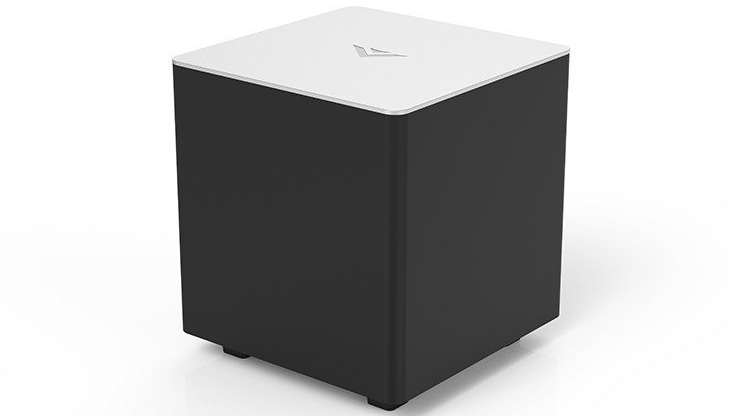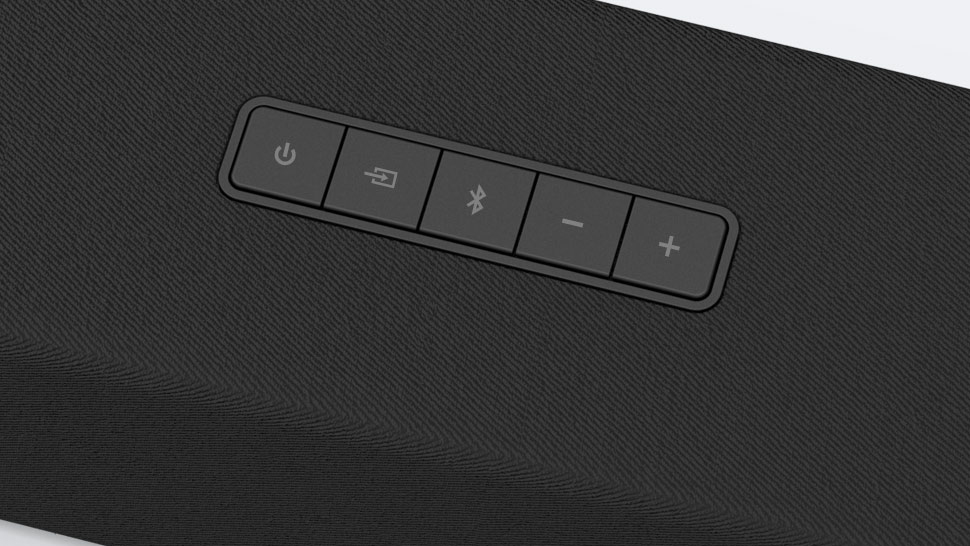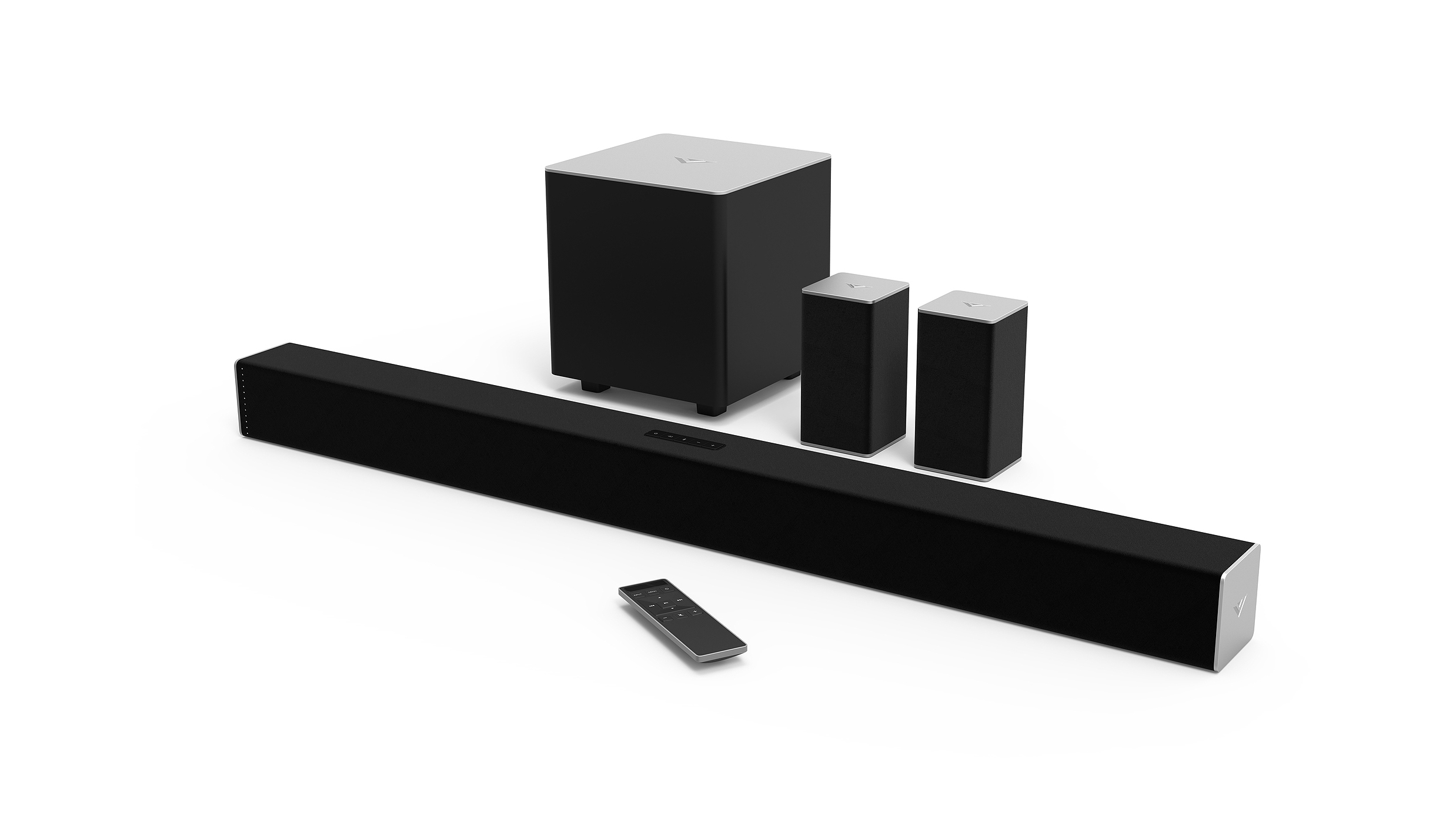TechRadar Verdict
If you’re in the market for a budget soundbar, you can’t do much better than the VIZIO SmartCast SB3851. If you’ve got the cash in hand for a better audio solution, however, you’re better served looking at higher-end wares.
Pros
- +
Great value
- +
Satellites and wireless subwoofer
- +
Built-in Google Cast
Cons
- -
Purposeless VIZIO SmartCast app
- -
Shallow soundstage
- -
TV audio lacked clarity
Why you can trust TechRadar
In a day and age where you could easily drop the entirety of your next paycheck on a soundbar, Vizio’s 38-inch SmartCast SB3851 is a breath of fresh air.
For around $299 (about £240, AU$395), the SB3851 comes with a decent-sized bar, a wireless subwoofer and two satellite speakers for around as much as a Blu-ray player.
It might not offer the Hi-Res badge that Sony’s soundbars offer or include objective-based surround sound like Dolby Atmos or DTS:X but, for the price, the SB3851 is tough to beat.
Design
As far as soundbars go, the SB3851 is more or less right in the middle in terms of size. At 38 inches end-to-end, it makes for the perfect companion for any size TV. It fits just as well underneath a 65-inch screen like the Sony Bravia XBR-65X930D as it does beneath a 49-inch TV – its versatility is just one of its many strengths.
The other strengths, design-wise, are the two satellite speakers that connect to the back of the subwoofer. The SB3851 comes with the cables necessary to hook them up, and they can sit surprisingly far from the subwoofer thanks to the ample-sized cord.

The satellites and the main soundbar share the same basic-but-classy design scheme of black and silver. The body of the speaker is covered in a fabric mesh while the ends are capped in silver with a VIZIO logo etched into the center. It’s simplistic to be sure, but sometimes the best designs are the most refined ones.
Besides the two satellite speaker cables, inside the box you’ll also find a remote control, a stereo RCA to 3.5mm cable, a 3.5mm to 3.5mm cable, a coaxial cable, an HDMI cable, a digital optical cable and enough gear to wall mount the speaker, if that’s something you’re into.
Sign up for breaking news, reviews, opinion, top tech deals, and more.
The cables, as you might expect, correspond to open ports on the the SB3851’s backside – there’s HDMI in/out, digital coaxial In, auxiliary audio in, optical audio in and an ethernet port, just in case you want to hardwire it to your router.
Controlling the music can be done in a number of ways, either through the buttons along the top of the speaker – which include power on, Bluetooth, volume up and down and source buttons – via the remote or through the VIZIO SmartCast app. It’s here where we run into our first snag with VIZIO’s cost-effective soundbar – beyond basic controls, the VIZIO app adds almost nothing to the experience. In the app there’s a music section, for example, that more or less is limited to content from iHeartRadio and Vadio, the latter of which apparently is not supported on Google Cast Audio.
The system seems to make more sense for movie and TV lovers who have assumingly bought one VIZIO’s excellent SmartCast TVs. However, for a music lover, there’s almost no purpose for the app to live on your phone.

That said, the exception to that would be if you bought multiple VIZIO SmartCast products – say a soundbar, a TV and a portable speaker – and wanted to create a Sonos-like multi-room audio setup, something which can only be facilitated through the app.
The other bonus here is that once your device is hooked up over Wi-Fi most apps on your mobile device will recognize the soundbar as a regular ol’ Google Cast system, meaning friends can send audio streams from YouTube, Spotify or Pandora with a tap of a button.

Performance
There’s two ways to see performance – relative or universal.
Universally speaking, the SB3851 leaves a lot to be desired. It has a shallow soundstage, and sound begins to crackle and distort at higher volumes. Sound from VIZIO 38-inch ’bar is accurate and fairly clear, but compared to some of the higher end gear from Yamaha and Klipsch, it’s far from the top of the pack.
But those soundbars, the ones with immaculate mids and highs and room-shaking lows, those costs hundreds of dollars more, sometimes thousands.
Compared to soundbars in its class, though, the SB3851 is well-performing setup that handles all types of content, from rap and rock to basic talk radio to intense action scenes, with ease. Moreover, if I had to pinpoint one highlight for the SB3851 it’d be how versatile the soundbar is at nearly everything. Mids and highs shine through just bright enough over a controlled bass. Little details are lost here and there, and the bass feels a bit more passive than I’d like it to be, but overall you can feed VIZIO’s soundbar any kind of content and come away at least moderately pleased with what you hear.
If you’re looking for hard specs, the only ones supplied by VIZIO are that the soundbar itself contains two 2.75” full range drivers (one for each channel), one 2.75” driver for the center channel, two 2.5” high-efficiency drivers for each satellite and a 5” subwoofer driver. The system’s frequency response is 50-20KHz, but there’s no mention of codec support – though it does support Dolby Digital, DTS Studio Sound and DTS TruVolume technology.

We liked
Check any other major manufacturer and you’d be hardpressed to find a 38-inch soundbar, two satellite speakers and a wireless subwoofer – with built-in Google Cast capabilities – for $299 (about £240, AU$395). I’m not saying it’s impossible and I’m sure they exist somewhere, but finding them at the quality that VIZIO’s SB3851 offers is one heck of a task.
We disliked
On the flip side of that, while I label the soundbar as a good all-arounder, there are others who’d claim that the soundbar lacks refinement in the audio department. Just because it can handle everything, doesn’t mean that it handles everything with delicate care. Details are going to get lost in the transition and highs, lows and mids won’t sound as good here as they would on higher end equipment.
Final verdict
In the budget audio category, VIZIO’s 38-inch soundbar is king. Few hardware manufacturers would be as ambitious in selling you a soundbar, a subwoofer and two satellite speakers for under $300, and even fewer would then pack in the half-dozen cables needed to connect the sound system to all your favorite devices.
That said, performance-wise the SB3851 leaves a lot to be desired. While it can push the envelope in terms of volume, it never sounds as crisp or as clear as a soundbar should. The SB3851 is therefore best bought as an affordable replacement to the awful-sounding speakers that come built into your TV. This soundbar probably isn’t going to win any fans from the audiophile crowd, but as a bargain hunter I can’t help but love VIZIO’s latest ‘bar.

Nick Pino is Managing Editor, TV and AV for TechRadar's sister site, Tom's Guide. Previously, he was the Senior Editor of Home Entertainment at TechRadar, covering TVs, headphones, speakers, video games, VR and streaming devices. He's also written for GamesRadar+, Official Xbox Magazine, PC Gamer and other outlets over the last decade, and he has a degree in computer science he's not using if anyone wants it.
